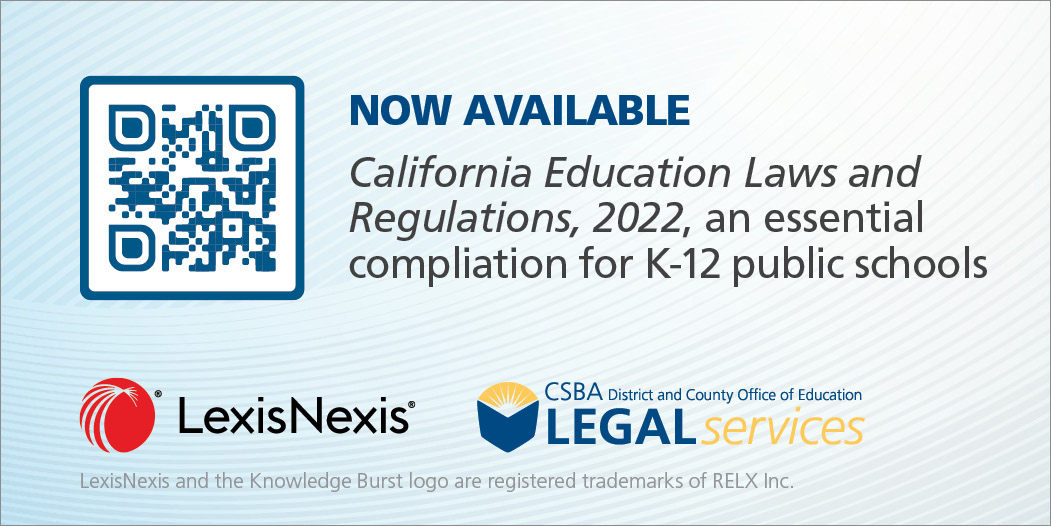Governance
Assemblymembers and Senators in the state Legislature introduced a number of bills directly responding to the breaking news stories coming out of local board meetings, and ultimately sent two to Gov. Newsom’s desk for consideration.



From lawsuits to violent incidents at school events and board meetings, national surveys of K-12 educators — including district leaders, principals and teachers — consistently show that parents have become a key source of tension in schools. However, even though researchers note that these incidents may be the work of a small but vocal minority of parents, there are steps schools can take to better engage all parents in ways that can alleviate political tensions.
While national surveys of educators do reveal points of tension between families and schools as it relates to curriculum and inclusive policies, those same surveys also underscore the influence of strong family engagement and the importance of building trusting relationships with families to head off potential conflict early, according to researchers.

Troy Flint | tflint@csba.org
Editorial Director:
Kimberly Sellery | ksellery@csba.org
Staff Writers and Contributors:
Alisha Kirby | akirby@csba.org
Heather Kemp | hkemp@csba.org
Teresa Machado | tmachado@csba.org
Dana Scott | dscott@csba.org
Meghan Russell | mrussell@csba.org
Director of Graphic Design & Branding:
Kerry Macklin | kmacklin@csba.org
Senior Graphic Designer:
Amanda Moen | amoen@csba.org
Susan Markarian | Pacific Union ESD
President-elect:
Albert Gonzalez | Santa Clara USD
Vice President:
Bettye Lusk | Monterey Peninsula USD
Immediate Past President:
Dr. Susan Heredia | Natomas USD
CEO & Executive Director:
Vernon M. Billy
California School News (ISSN 1091-1715) is published 11 times per year by the California School Boards Association, Inc., 3251 Beacon Blvd., West Sacramento, CA 95691. 916-371-4691. $4 of CSBA annual membership dues is for the subscription to California School News. The subscription rate for each CSBA nonmember is $35. Periodicals postage paid at West Sacramento, CA and at additional mailing office. POSTMASTER: Send address changes to California School News, 3251 Beacon Blvd., West Sacramento, CA 95691.
News and feature items submitted for publication are edited for style and space as necessary.

The more I got involved with CSBA, the more I grew as a board member and as a leader. I completed the Masters in Boardsmanship program — the precursor to Masters in Governance® — and still completed MIG when that became available. In addition to the direct learning from CSBA governance consultants, I found that the networking with other board members these opportunities provided is just as important.

October is National Bullying Prevention Month and local educational agencies should consider how they can foster positive, safe and inclusive school environments in order to prevent bullying and boost student success.
CSBA’s Research and Education Policy Development (REPD) Department has published a governance brief, “School safety: Bullying and cyberbullying,” that includes definitions and statistics on bullying and cyberbullying, information on the impacts of bullying and signs that someone is being bullied, how LEAs can help students and families, examples of bullying prevention communications, sample questions for board members and other resources.

At a time when one in four school meals are of poor nutritional quality, fully aligning school meals with these proposed standards could positively impact hundreds of thousands of children into their adulthood, with the added benefit of saving billions in lifetime medical costs, researchers concluded.
The USDA’s proposal would require schools to offer mostly whole grain foods beginning in fall 2024, with gradual sugar and sodium content reductions occurring through 2029. The agency is expected to issue final rules in April 2024.

Proponents of continuing education include not just big names such as Warren Buffett and Oprah Winfrey but also CSBA’s leadership, having found — from years of providing quality board member training — that ongoing professional development makes for better board members, higher-performing school district and county office of education boards and, ultimately, provides better conditions for student achievement.
The CVRA is a 2001 California law that provides that “an at-large method of election may not be imposed or applied in a manner that impairs the ability of a protected class to elect candidates of its choice or its ability to influence the outcome of an election, as a result of the dilution or the abridgment of the rights of voters who are members of a protected class.” (Elections Code 14027.) The CVRA is similar to the federal law, the Voting Rights Act (VRA), but has key distinctions that are meant to provide more protections for minority voters in California. For example, the CVRA applies only to at-large election systems, also referred to as a multi-member district, which operate by affording all voters an equal number of votes as there are open positions. Using those votes, voters elect all of the representatives that will serve on the council. In contrast, a single-member district system operates by dividing the represented area into districts with roughly equal populations and all voters in each district receive one vote for their one representative.

The California State Board of Education (SBE) took action on items related to student performance and accountability during its one-day Sept. 13 meeting. Board President Linda Darling-Hammond also noted the new academic year is in full swing with novel supports in place for children and educators. She highlighted new literacy instruction resources and funding, as well as the Expanded Learning Opportunities Program (ELO-P) — now in its first year of being fully implemented.
The meeting also introduced the new State Board student member, Anya Ayyappan, a senior at Dougherty Valley High School in San Ramon. As a member of her district’s board of education, she serves as a liaison between the local student body of over 30,000 youth and the school board.
A May 2023 report from the Antidefamation League found that antisemitic harassment, vandalism and assault in California rose by almost 40 percent between 2021 and 2022. Those numbers include the largest number of incidents ever recorded in Los Angeles County and three times the largest number of previous incidents in San Bernardino and Kern counties.

The California Commission on Teacher Credentialing discussed during its Aug. 24-25 meeting how a host of factors — including a Supreme Court decision that could impede equitable access to higher education; attacks on educators, academics and the rights of students; and state-level challenges around housing, student transportation and changing facilities needs — are affecting the education field. Additionally, the CTC discussed how ongoing work to expand transitional kindergarten offerings could impact retention and retainment efforts in California, as well as school communities as a whole.
Despite these challenges, commissioners celebrated the start of a new academic year and received updates on the Roadmap to Education Careers Initiative, conducted a study session on preparation program completer survey data and approved actions toward the launch of a literacy performance assessment (LPA) pilot study.

There are several concerns regarding organic waste. First, when organic waste such as food breaks down, it emits methane, a short-term climate pollutant and major contributor to climate change. Second, organic waste makes up the largest type of waste sent to the landfill in California every year. To address these concerns, then-Gov. Jerry Brown signed Senate Bill 1383 in 2016, with the goal of a 75 percent statewide reduction in organic waste by 2025. The law hopes to accomplish this goal by (1) redirecting edible unused food to Californians who do not have enough to eat and (2) composting food waste rather than directing it to landfills.
During a Sept. 12 Project Cal-STOP informational webinar, project consultant Hilva Chan noted that since students returned to school full time from pandemic closures, there has been an increase in reports of bullying and harassment by seventh graders, a drop in school connectedness in grades 7-12 and a decrease in perceived caring adult relationships.

Executive Director Matt Navo spoke about a “turning point” for the organization, where objectives are evolving from just a collaboration model to the goal of transforming systems. He said the Statewide System of Support (SSOS), which aims to provide a quality, equitable education to very student, “is not a system yet.”
Humboldt COE is expanding its global partnership program

Humboldt County is known primarily for its Redwood National and State Parks, but education leaders are actively boosting the region’s profile as a key player in providing youth a “global education.”
Since 2019, the Humboldt County Office of Education (HCOE) has partnered with Taiwan to build a community around international learning and enable Humboldt County students to participate in project-based learning while developing international friendships. To date, more than 70 local classrooms have established sister classroom relationships with teachers in Taiwan.
In the last four years, the Global Classroom Connect Program shown potential for overlap in integration opportunities with areas including the Next Generation Science Standards, English language arts, mathematics, robotics and career technical education, said HCOE Deputy Superintendent Colby Smart.
Student Board Member (SBM) Governance Q&A and Networking
Nov. 6-Dec. 11 (4 sessions)
MIG Course 2: Student Learning & Achievement/ Policy & Judicial Review
Oct. 23 | Kern County/Bakersfield
Oct. 23 | San Mateo County
Oct. 25 | Shasta/Siskiyou counties
Oct. 25
The Brown Act | Marysville

Thanks for reading our October 2023 newsletter!









